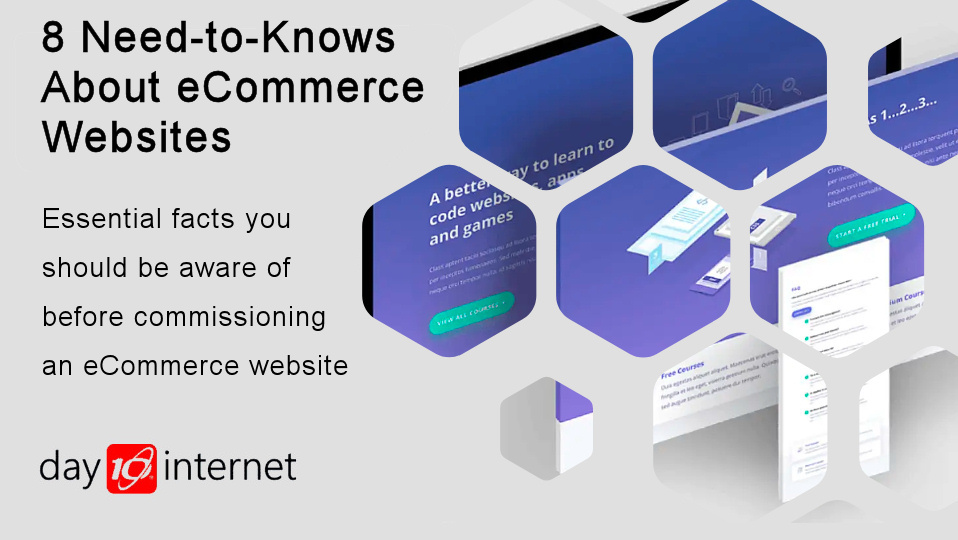Introduction
These days, an online shop is a must for any business involved in selling goods and services to customers. Those businesses that were already selling online when the pandemic and subsequent lockdowns startedwere able to continue trading. Those that didn’t suffered.
So, if you are one of those business owners who haven’t had the capability to trade online and are now thinking about starting, what’s involved in setting up an online shop? This article will explain how to get an eCommerce system, and give you some insights and tips that you wouldn’t otherwise be aware of.
You will learn:
- How to add an eCommerce facility to an existing website.
- What products will you be selling?
- How are you going to price your products or services?
- Shipping – where are your customers based?
- How are you going to take payments?
- How are you going to fulfil orders?
- How are you going to support your customers?
- How to update your product catalogue.
The first thing to say is that there is a lot more to it than simply displaying products on a website and providing the capability for your customers to pay for them online. There are many hidden factors that most people forget about and only start planning for them after the online shop has been developed.
In a typical eCommerce system, there are two parts of the process involved in purchasing and delivering orders.
The front end – the part that the customer sees. This goes from choosing a product all the way through to ordering.
The back end – The part that the customer doesn’t see and involves a system administrator. This starts from the point where payment has been taken and goes all the way through to delivery and beyond.
Let’s look at the entire process.
Order Process in a Typical eCommerce SystemFront end Customer in the shopping catalogue.
Customer in the cart.
Customer in the checkout.
Customer’s email.
Note, at this point payment has been taken by the system; the order is beyond the customers’ control and under control of the system administrator. Back end System Administrator
New orders are listed in the administrator area of the website. Each order is given a status. Typical statuses are:
The Administrator
The System
|
Getting an eCommerce website
Now you’re aware of the process that occurs, and the kind of effort needed to manage the system, it’s time to start thinking about getting an eCommerce website.
The first thing to do is research and planning. Start by asking yourself some questions and make a list of your answers. This will give you an excellent framework to start planning.
Do you already have a website?
If you do, and it has been built using WordPress, as many sites have these days, then an online shop can be seamlessly added by a web developer.
Tip
Ask your web developer whether the site has been built with WordPress. If it has, then he should be able to integrate online shopping functionality using a free application called WooCommerce. WooCommerce is license-free and widely used by developers of online shopping platforms. There will be development costs to integrate it but you should not be asked to pay a license fee. You may, however, be asked to pay for add-ons (plugins) that provide functionality not provided by the standard Woo Commerce package.
What products will you be selling?
You can sell physical goods, online products that customers download from your shop, events, and even services. What you are selling will determine the tasks that the system administrator will need to do when customers order. For example, physical goods must be packaged and despatched. If your products are downloadable then this won’t be required. Similarly, if you’re selling services such as bookings for a seminar.
How are you going to price your products or services?
Decide what currency you will display and charge. If you’re business is solely UK-based, then the currency will be UK pounds. If you ship to other countries, will you used UK pounds for those countries or will you display and use the local currencies: This will add to the complexity of the eCommerce system.
Will your prices displayed include or exclude VAT? If you’re shipping abroad then different VAT rules apply which you will have to reflect in your system.
Shipping – where are your customers based?
If you only ship to customers in Great Britain, then shipping is straightforward. But you still need to decide how your costs will be based. Will you charge a flat fee for each shipment? Will fees be based on weight? Will they be based on customers’ location?
If you’re going to be shipping to customers anywhere outside of Great Britain, your shipments will be classed as international, and you will have to factor in all the additional paperwork, red tape, time, and cost that goes with international shipping. Remember that this is likely to apply to shipments to Northern Ireland in the very near future.
How are you going to take payments?
You will need some form of online payment facility. For small businesses, PayPal is often the first port of call. It is simple to set up, there are no subscription fees, but you will have to pay a commission fee on each transaction. Woo Commerce has PayPal payments built in a standard so there is no need to buy additional software plugins.
There are other payment systems available, many of which will require a monthly or annual subscription. You may already have a merchant account with a major bank to allow you to take credit/debit card payments. If so, I advise you to talk to your support contacts in the bank for recommendations. I have experience with several payment systems and can provide some advice.
Also, don’t forget refunds. Hopefully you won’t have to give too many but, nevertheless, your payment system must allow for this and make it easy to refund customers.
Your payment system should have some kind of dashboard that will allow you to track the status of each transaction. You will inevitably have some customers’ orders fail (for example – cards rejected by the back) and being able to track these down through the payment providers’ dashboard is essential.
How are you going to fulfil orders?
This is one area that most people skim over and underestimate. Remember, when you receive an order, you need to deliver it as soon as possible.
Ideally, at the very worst, any order that arrives from the site prior to lunchtime should be shipped out the same day. You should aim to better that if you can. These days, people are not prepared to wait weeks to receive an online order. I know that long waits can happen with goods ordered from eBay, but these tend to be for low-cost items shipped from abroad.
This means that you need to have a staff member available every day to handle the packing and shipping. You will need a source of packing materials – boxes, jiffy- bags, bubble wrap, tape, plastic sheet, and wrapping paper.
Tip:
Iif you are going to be shipping a lot of goods and your purchase prices are more than a few tens of pounds, then you might want to look at DHL for the shipping. They have set shipping prices based on weight and dimensions. Their rates can be integrated into your online shop, they provide packaging free, and they collect from your door.
How are you going to support your customers?
The job of a system administrator doesn’t end when an order has shipped out. Customers may have complaints: the goods haven’t arrived, they are damaged, the customer wants to return the goods for some reason and get a refund.
Even before the goods have shipped, the system administrator may get calls from customers enquiring about delivery.
Being able to respond promptly to these enquiries is essential to providing excellent customer service. I’ve noticed in the last 18 months or so that there is a trend for online retailers not to provide support phone numbers and force customers to rely on email and contact enquiry forms.
I would not advise going down this route. If you decide that you really can’t spare the effort to deal with customer support enquiries over the phone, then provide some other way that will quickly provide help to customers, such as an online chat facility.
Remember that if a customer decides to call you about an order, then there is probably an urgent reason for doing that and that customer will expect a prompt resolution. An automatic email saying that “you’re dealing with the enquiry and will get back soon” is not good enough. Providing swift action is the mark of good customer service and will pay for itself in the long run through increased sales.
Catalogue Updates
Product catalogues change from time to time, the frequency of which depends on the type of products being sold. As part of your online shop administration, you need to factor in the cost of updates – adding new products, deleting old products, price adjustments.
When products are out of stock you must show that immediately. All eCommerce systems have automat stock control built in. You set the amount of stock you have for each item and the system decreased that each time a customer buys. When the stock level reaches zero, this is shown to the customers, and they are prevented from any further purchases of that item
But you must remember that this will only work for online purchases. If you are already selling items offline, over the counter for example, that you must factor these into the online system otherwise the automatic stock control won’t work.
Conclusions
I hope I have given you a good idea of what is involved in an eCommerce system. I have tried to emphasize the parts that are not visible to the customer as opposed to the visible parts which tend to be given the most focus at the beginning.
Good planning, factoring in the things I have described will go a long way to implementing a good functioning system from the outset and avoid unnecessary cost due to poor implementation.
If you would like us to develop an eCommerce facility for you or add one to your existing website, then take a look at what we can offer.
Good luck.






